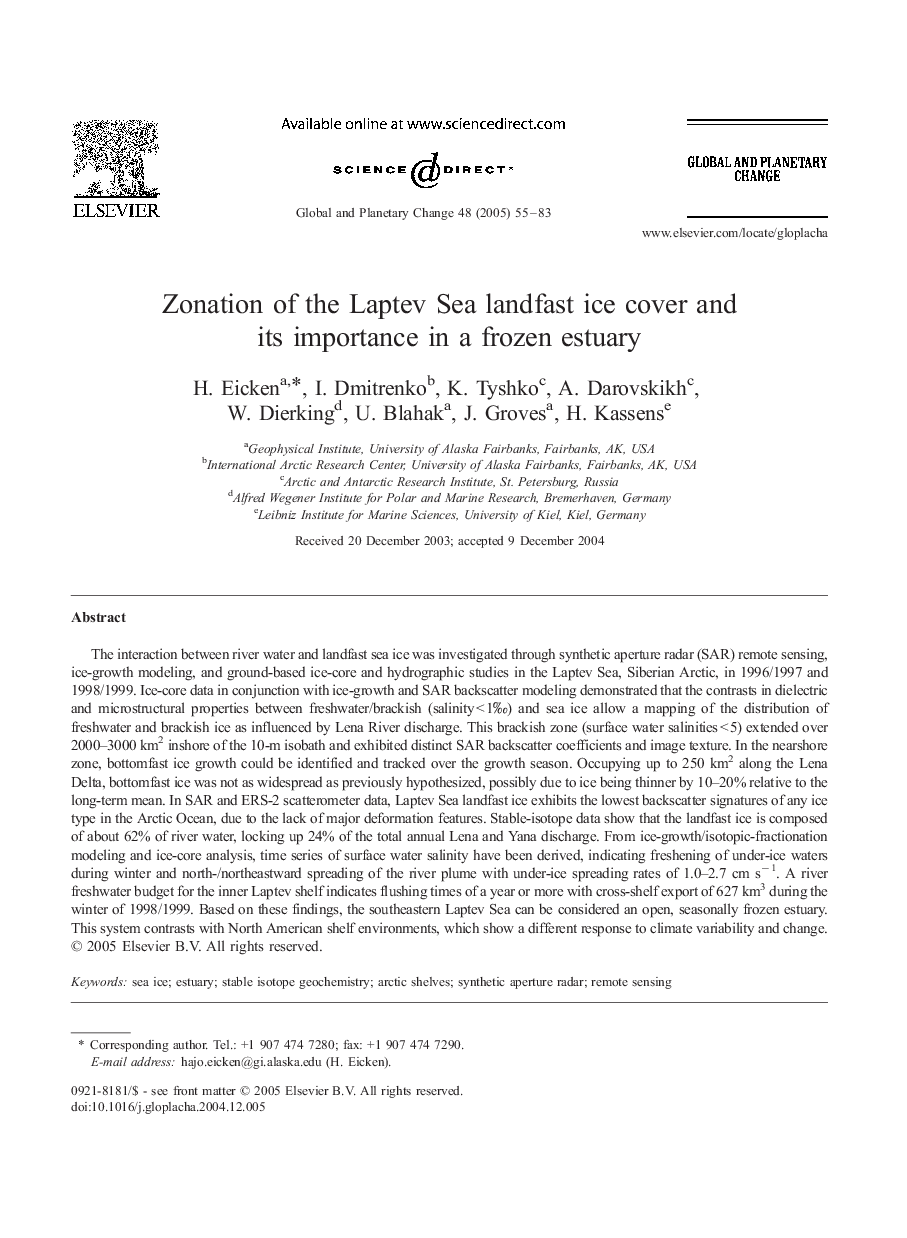| کد مقاله | کد نشریه | سال انتشار | مقاله انگلیسی | نسخه تمام متن |
|---|---|---|---|---|
| 9462536 | 1621743 | 2005 | 29 صفحه PDF | دانلود رایگان |
عنوان انگلیسی مقاله ISI
Zonation of the Laptev Sea landfast ice cover and its importance in a frozen estuary
دانلود مقاله + سفارش ترجمه
دانلود مقاله ISI انگلیسی
رایگان برای ایرانیان
کلمات کلیدی
موضوعات مرتبط
مهندسی و علوم پایه
علوم زمین و سیارات
فرآیندهای سطح زمین
پیش نمایش صفحه اول مقاله

چکیده انگلیسی
The interaction between river water and landfast sea ice was investigated through synthetic aperture radar (SAR) remote sensing, ice-growth modeling, and ground-based ice-core and hydrographic studies in the Laptev Sea, Siberian Arctic, in 1996/1997 and 1998/1999. Ice-core data in conjunction with ice-growth and SAR backscatter modeling demonstrated that the contrasts in dielectric and microstructural properties between freshwater/brackish (salinity < 1â°) and sea ice allow a mapping of the distribution of freshwater and brackish ice as influenced by Lena River discharge. This brackish zone (surface water salinities < 5) extended over 2000-3000 km2 inshore of the 10-m isobath and exhibited distinct SAR backscatter coefficients and image texture. In the nearshore zone, bottomfast ice growth could be identified and tracked over the growth season. Occupying up to 250 km2 along the Lena Delta, bottomfast ice was not as widespread as previously hypothesized, possibly due to ice being thinner by 10-20% relative to the long-term mean. In SAR and ERS-2 scatterometer data, Laptev Sea landfast ice exhibits the lowest backscatter signatures of any ice type in the Arctic Ocean, due to the lack of major deformation features. Stable-isotope data show that the landfast ice is composed of about 62% of river water, locking up 24% of the total annual Lena and Yana discharge. From ice-growth/isotopic-fractionation modeling and ice-core analysis, time series of surface water salinity have been derived, indicating freshening of under-ice waters during winter and north-/northeastward spreading of the river plume with under-ice spreading rates of 1.0-2.7 cm sâ 1. A river freshwater budget for the inner Laptev shelf indicates flushing times of a year or more with cross-shelf export of 627 km3 during the winter of 1998/1999. Based on these findings, the southeastern Laptev Sea can be considered an open, seasonally frozen estuary. This system contrasts with North American shelf environments, which show a different response to climate variability and change.
ناشر
Database: Elsevier - ScienceDirect (ساینس دایرکت)
Journal: Global and Planetary Change - Volume 48, Issues 1â3, September 2005, Pages 55-83
Journal: Global and Planetary Change - Volume 48, Issues 1â3, September 2005, Pages 55-83
نویسندگان
H. Eicken, I. Dmitrenko, K. Tyshko, A. Darovskikh, W. Dierking, U. Blahak, J. Groves, H. Kassens,